Will these 10 traditional Holy Week practices survive?
MANILA, Philippines - During Holy Week, many Catholic households follow several traditions to honor Jesus Christ's sacrifice.
It has become a tradition that during these times, Filipino Catholics should remember Christ's passion, suffering and death by staying at home to pray and reflect on Christ's death. At present, however, some people opt to use the Holy Week to go to the beaches rather than sticking with the traditions.
Catholics have their own ways of observing the Holy Week. With a growing number of people choosing relaxation over reflection, will these Filipino traditions survive?
1. Fasting
Fasting is a simple reminder of what it means to suffer and to understand the sacrifice Jesus did for humanity. As a form of penitence, many people fast or voluntarily give up certain types of luxuries during the Lent season. The most common form of fasting during Lent is fasting from food.
RELATED: Here's how you can survive your 'food fasting' this Lent

The most common form of fasting during Lent is fasting from food. File photo
2. Participating in Pabasa
For those who grew up in provinces, Pabasa might be familiar. This is a ritual where your lolos and lolas chant the texts in the book of the passion of Christ in many different ways. For the young ones who have participated in the pabasa this year, and have endured the whole session, you should give credit to yourself.
RELATED: Will the Pasyon survive?
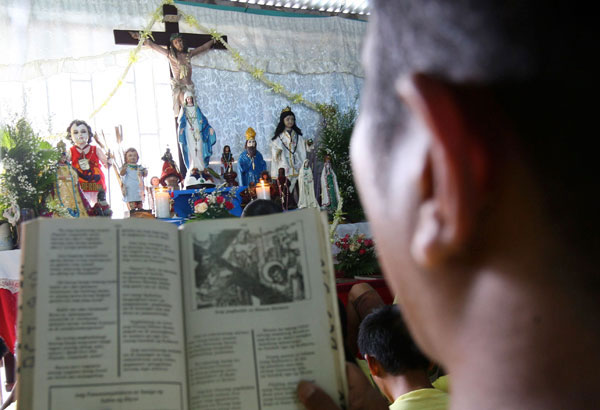
For those who grew up in provinces, Pabasa might be familiar. File photo
3. Visita Iglesia
One of the most important traditions during Holy Week is the Visita Iglesia, a practice in which the faithful visit seven churches on Maundy Thursday leading to the Good Friday to commemorate Christ's passion and to pray in front of the Blessed Sacrament.
RELATED: A look at churches where Pinoys spend Visita Iglesia

Barasoain Church in Bulacan. ellie.antonia.spy/Instagram
4. Procession
Processions are usually held on Good Friday, including The Way of the Cross. People led by the priest walk from station to station contemplating the Passion of Christ. There are a total of 14 stations.
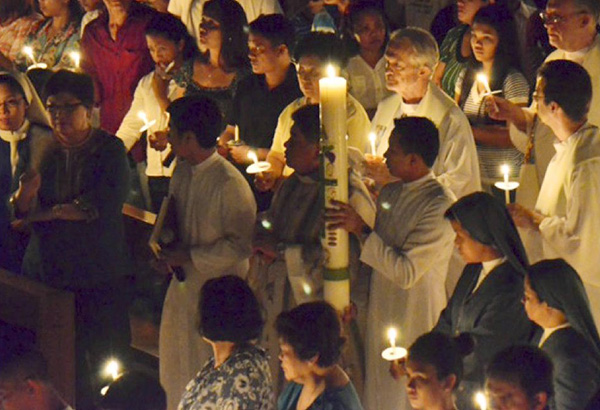
People led by the priest walk from station to station contemplating the Passion of Christ.
5. Senakulo
"Senakulo" is some sort of a play about the last days of Christ. They are often organized by and participated in by locals.
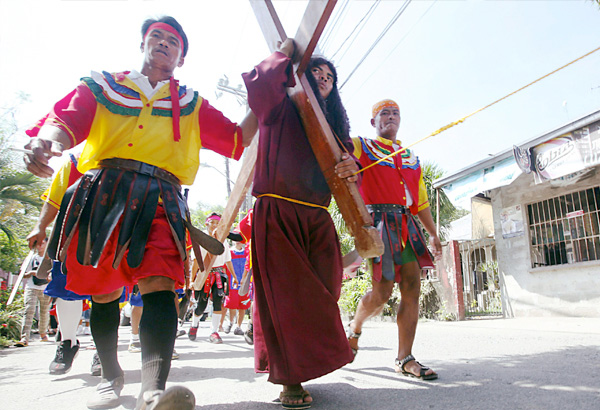
"Senakulo" is some sort of a play about the last days of Christ. Star/Val Rodriguez
6. Moriones Festival
Moriones refers to the masked and costumed penitents who march around the towns in Marinduque for seven days searching for Longinus. They roam around the streets from Holy Monday to Easter Sunday as a tradition.
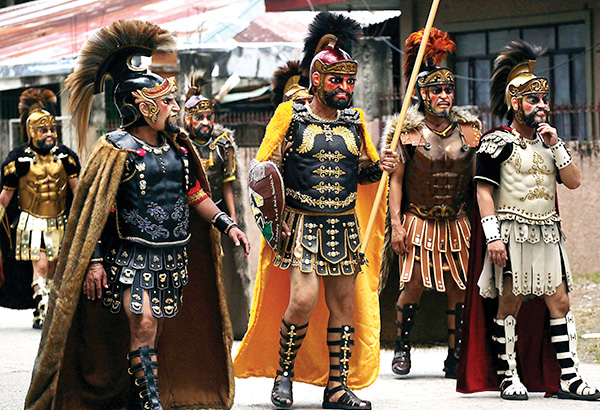
Men garbed as biblical Roman soldiers take part in the Moriones festival held during Holy Week in Marinduque. The festival celebrates the life of Longinus, the Roman soldier who pierced Christ’s side during the crucifixion. STAR/Joven Cagande
7. Cutud Crucifixions
Yearly activities in San Pedro, Pampanga during Holy Week include crucifixions. Participants in the local crucifixions usually play Biblical characters in full costume. They would reenact events during the Siete Palabras. This is done during Good Friday.
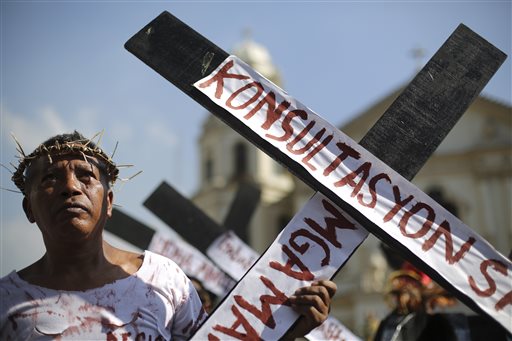
A Filipino man holds a wooden cross with slogans as he and others reenact the sufferings of Jesus Christ as part of their observance of Holy Week in downtown Manila, Philippines Monday, March 30, 2015. (AP Photo/Aaron Favila)
8. Flagellants
Flagellants in Pampanga during Holy Week are called "Magdarame." These practitioners do an extreme form of mortification of their own flesh by whipping it with various instruments. Flagellants roam the streets on Good Friday while either carrying wooden crosses or whipping their backs with bamboo lashes called “burilyos."
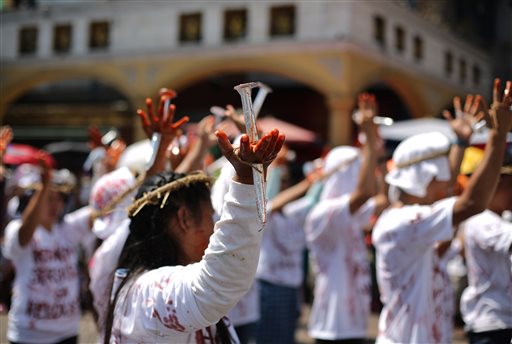
Poor Filipinos raise their hands with a mock nail as they reenact the sufferings of Jesus Christ as part of their observance of Holy Week in downtown Manila, Philippines on Monday, March 30, 2015. (AP Photo/Aaron Favila)
9. Night Vigil
Black Saturday is when Christ is entombed. Filipinos spend the day preparing for the night vigil leading up to Easter Sunday.
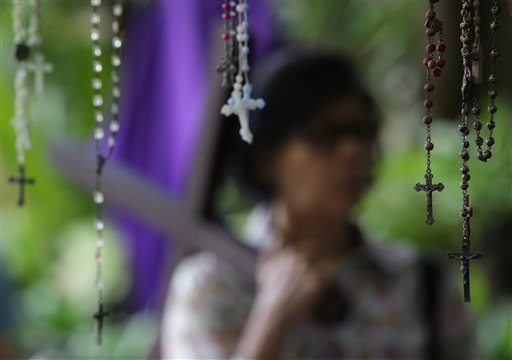
Rosaries hang in front of a Filipino woman as she carries a wooden cross while proceeding in the Stations of the Cross at the Philippine Center of Saint Pio of Pietrelcina on Wednesday, April 1, 2015 in suburban Quezon city, east of Manila, Philippines. (AP Photo/Aaron Favila)
9. Salubong
Easter Sunday is the celebration of the resurrection of Christ. At four o'clock in the morning, Filipinos do a salubong ceremony commemorating how the Virgin Mary met her risen son Jesus.
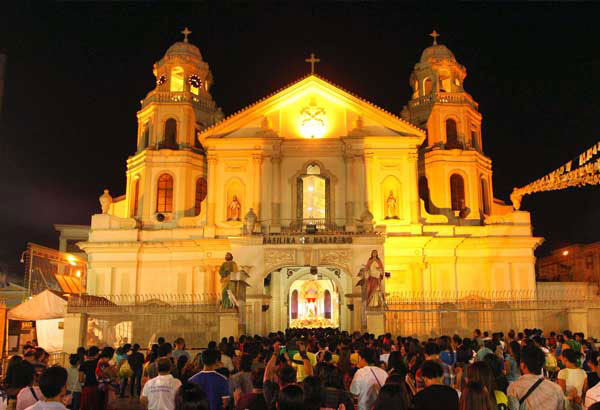
Easter Sunday is a celebration of the resurrection of Christ. File Photo
Source: traditionscustoms.com
- Latest























